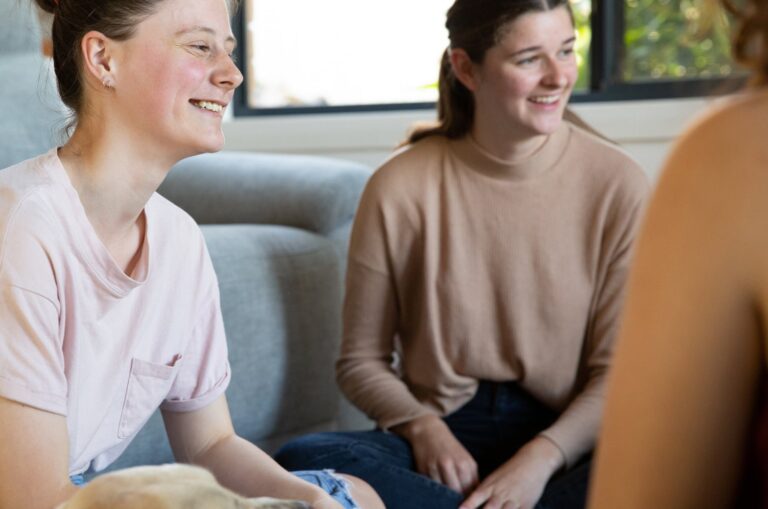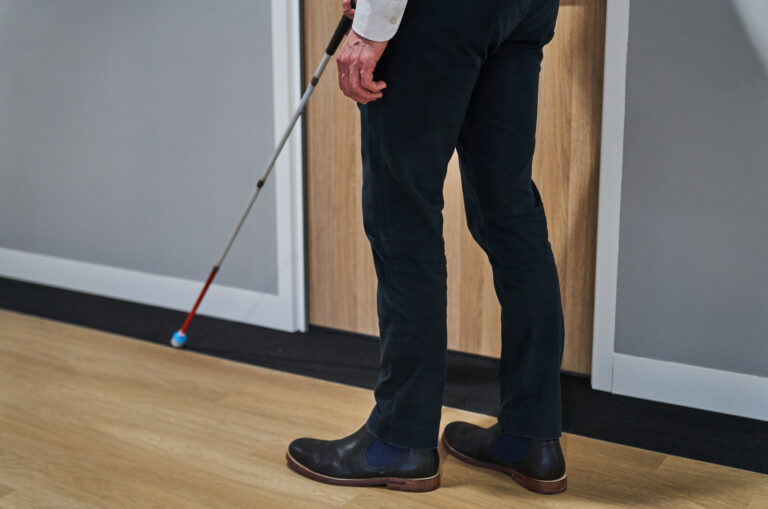How to modify your bathroom when living with low vision
Annette, a Guide Dogs Client, recently renovated her home. She offered us her insights and experience on how a person with low vision or blindness might modify their bathroom to increase their independence and improve their level of safety around the home.
Annette provided several suggestions that might be helpful, but keep in mind that this is general advice and the right modification for your home will depend on your individual needs.
Use non-slip flooring
Non-slip flooring can prevent falls and slips in the bathroom.
Textured tiles or rubber mats can provide extra grip on wet surfaces, while certain types of textured vinyl or rubber are potential alternatives.
Use contrasting colours and textures
High-contrast colours and textures can help you differentiate bathroom fixtures, walls, flooring, and different floor levels.
Textured mats or tiles, as mentioned above, increase safety, but are also a way of providing tactile cues and further differentiation between surfaces.
Install tactile markings
One way of locating important elements within the bathroom more easily is to cover them with tactile markings. You might use them on toilet handles, shower fixtures, taps, and medicine cabinet doors.
Put Braille labels on products
Braille labels are an easy way to identify similar products that are commonly used in the bathroom, such as shampoo and conditioner, body wash, deodorant, shaving cream, and hand wash.
An alternative is a simple rubber band system: one rubber band for deodorant, two for shaving cream, and so on. Or use elastic bands to identify similar products (one band for shampoo and two for conditioner)
Use a pump toothpaste dispenser
A pump dispenser lets you push a button and get a measured amount of toothpaste to put on your toothbrush, making the task much easier.
There are also automatic dispensers that allow you to load a standard toothpaste tube into a device you attach to your bathroom wall. A sensor automatically dispenses paste as soon as you put your brush under the tube.
Consider the lighting around mirrors
Some people with low vision require brighter lighting than might be typical, while others are more sensitive to light and require filtered or low-glare sources of light.
If you fall into either category, smart-lighting may be a useful option. It can be dimmed, brightened, or even change colour using voice commands.
Need help with modifications in your home?
Our Occupational Therapists help you to approach your everyday routine with confidence – everything from cooking with friends to making your garden beautiful.
You might also like
Ready to continue?
Seems like you have filled this form earlier. Let’s pick up where you left off.










